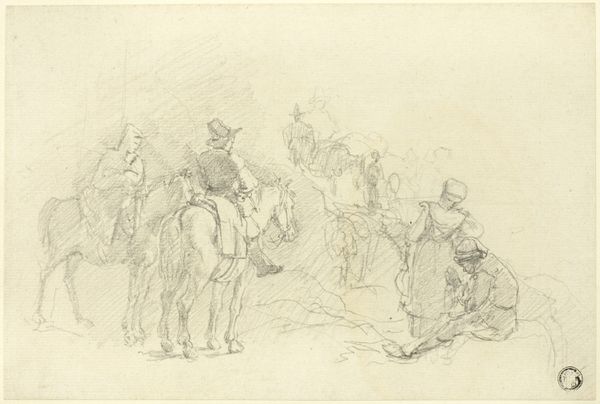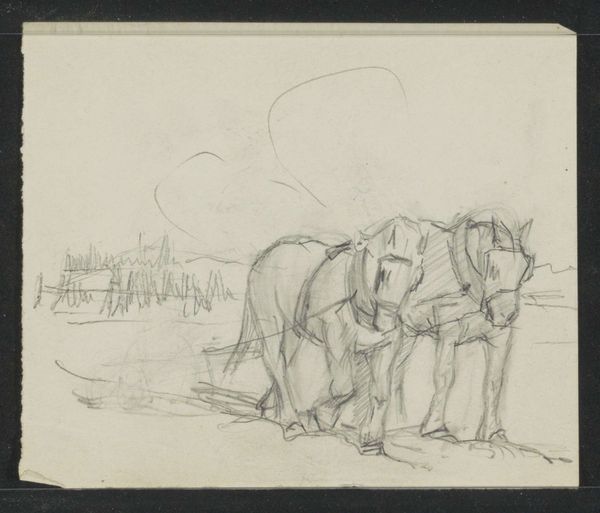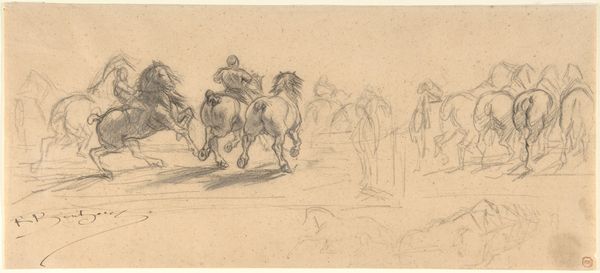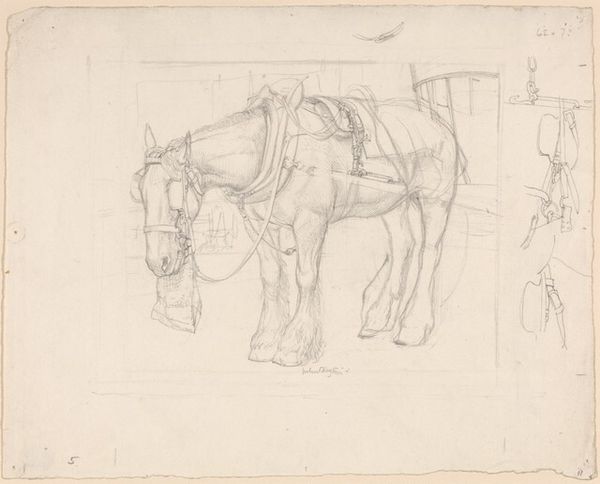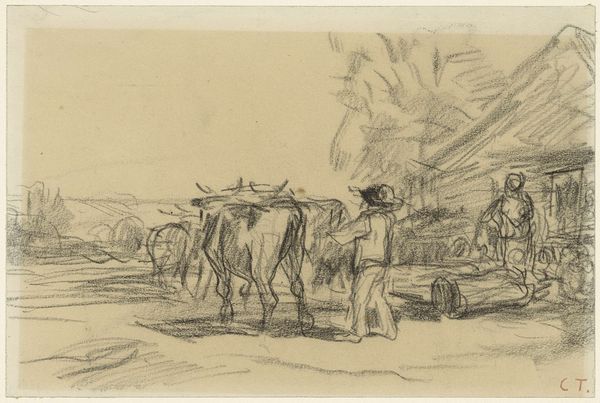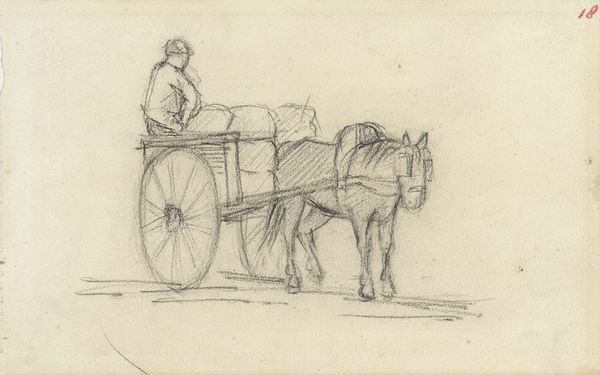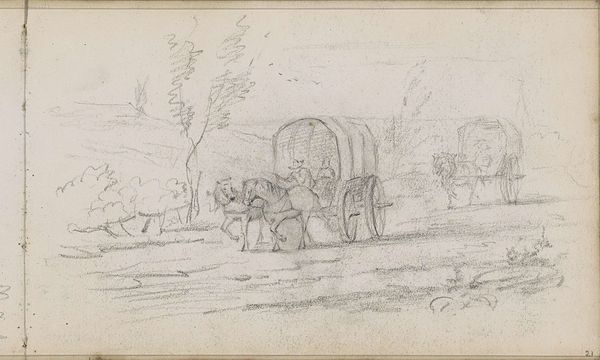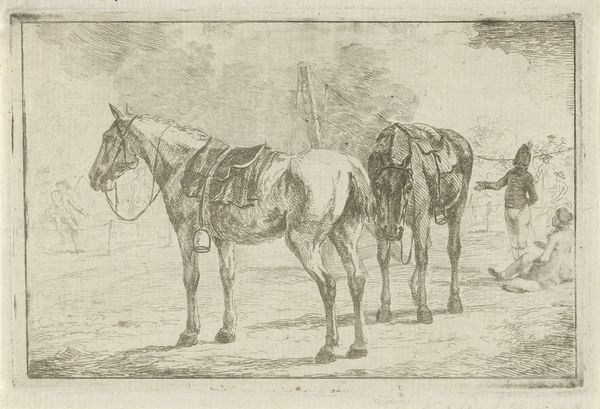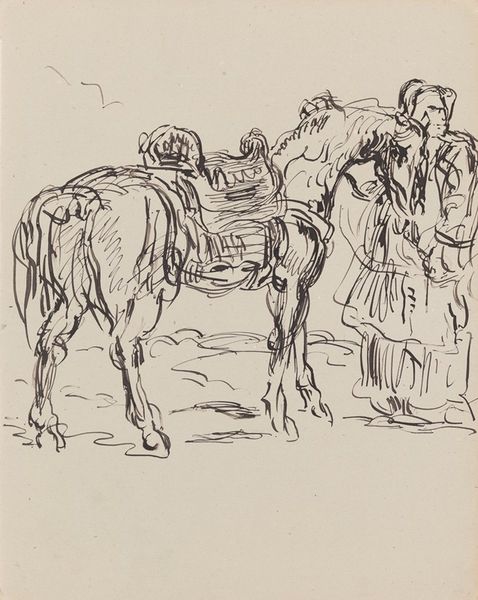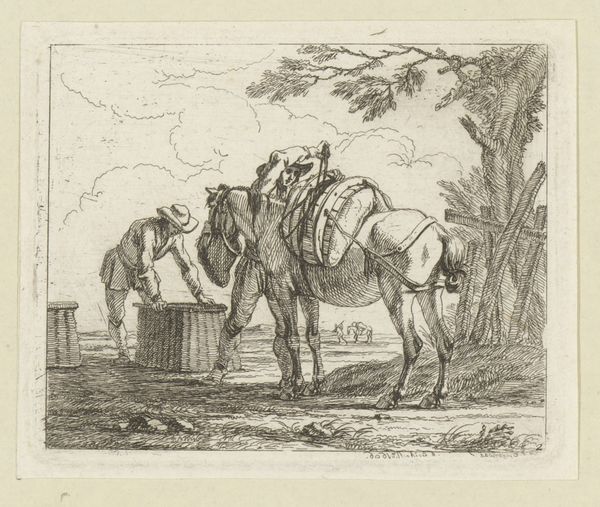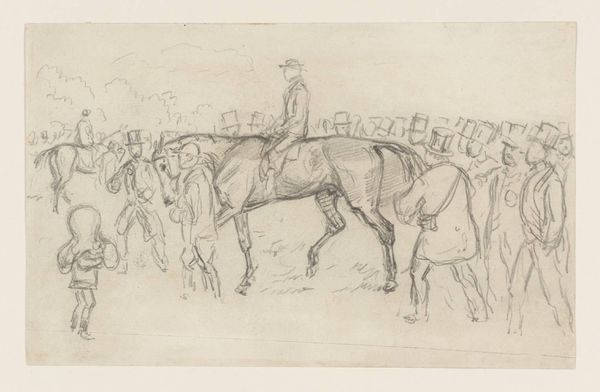
drawing, pencil
#
drawing
#
quirky sketch
#
narrative-art
#
dutch-golden-age
#
pen sketch
#
landscape
#
figuration
#
personal sketchbook
#
idea generation sketch
#
sketchwork
#
ink drawing experimentation
#
pen-ink sketch
#
pencil
#
sketchbook drawing
#
genre-painting
#
storyboard and sketchbook work
#
initial sketch
Dimensions: height 140 mm, width 197 mm
Copyright: Rijks Museum: Open Domain
Editor: This is "Three Men Beside a Horse and Sledge," a drawing by Gerard ter Borch II, created around 1634. It's a simple pencil sketch, but it gives off a fascinating sense of a candid moment, like we're peeking into someone's personal sketchbook. What do you notice in terms of its formal composition? Curator: What immediately strikes me is the drawing's compositional economy. Borch masterfully employs line to delineate form and space, achieving a remarkable sense of depth despite the apparent simplicity. Consider the variation in line weight, where the foreground figures are rendered with a darker, more assertive line, thus distinguishing the primary subject from the more ethereal background. Editor: So it’s about how the artist uses line to create emphasis and spatial relationships? Curator: Precisely. Also, reflect on how Borch uses implied lines to construct the architecture and background figures. Note the strategic placement of light and shadow using hatching to model form, enhancing the illusion of three-dimensionality. What does that accomplish in your mind? Editor: I see! So even though it’s a sketch, he’s thinking carefully about how light would fall, to add depth to the figures and the overall scene. I'd not considered such subtlety possible in a drawing. Curator: Indeed. And how the texture of the paper itself interacts with the pencil markings. It adds a palpable quality to the depicted scene. Look closely: how does the materiality itself become a signifier within the work? Editor: I see it now! Thanks for pointing out the artist’s technique; it does bring so much to the artwork’s structure. Curator: It’s about the careful observation of simple tools.
Comments
No comments
Be the first to comment and join the conversation on the ultimate creative platform.
